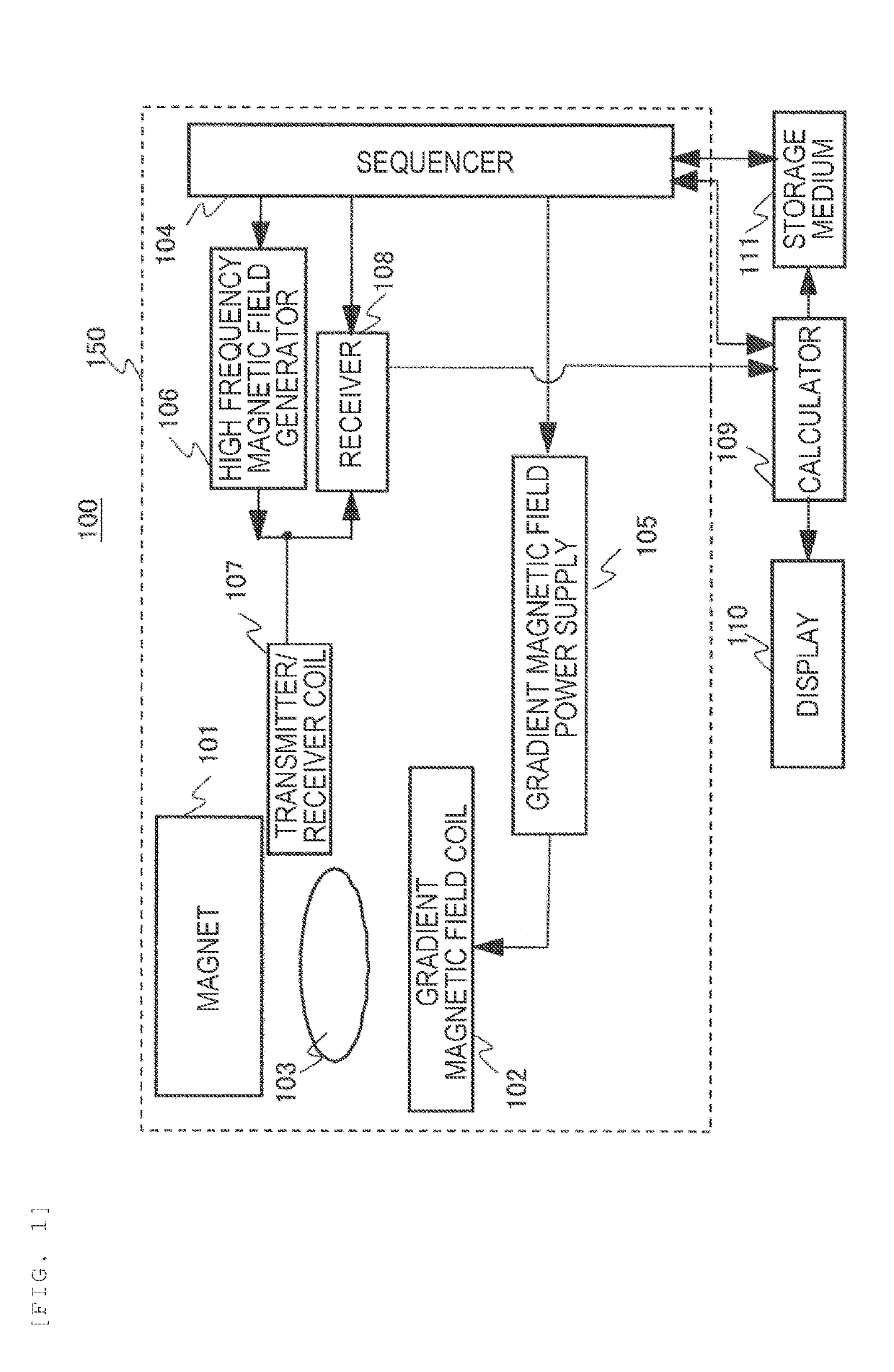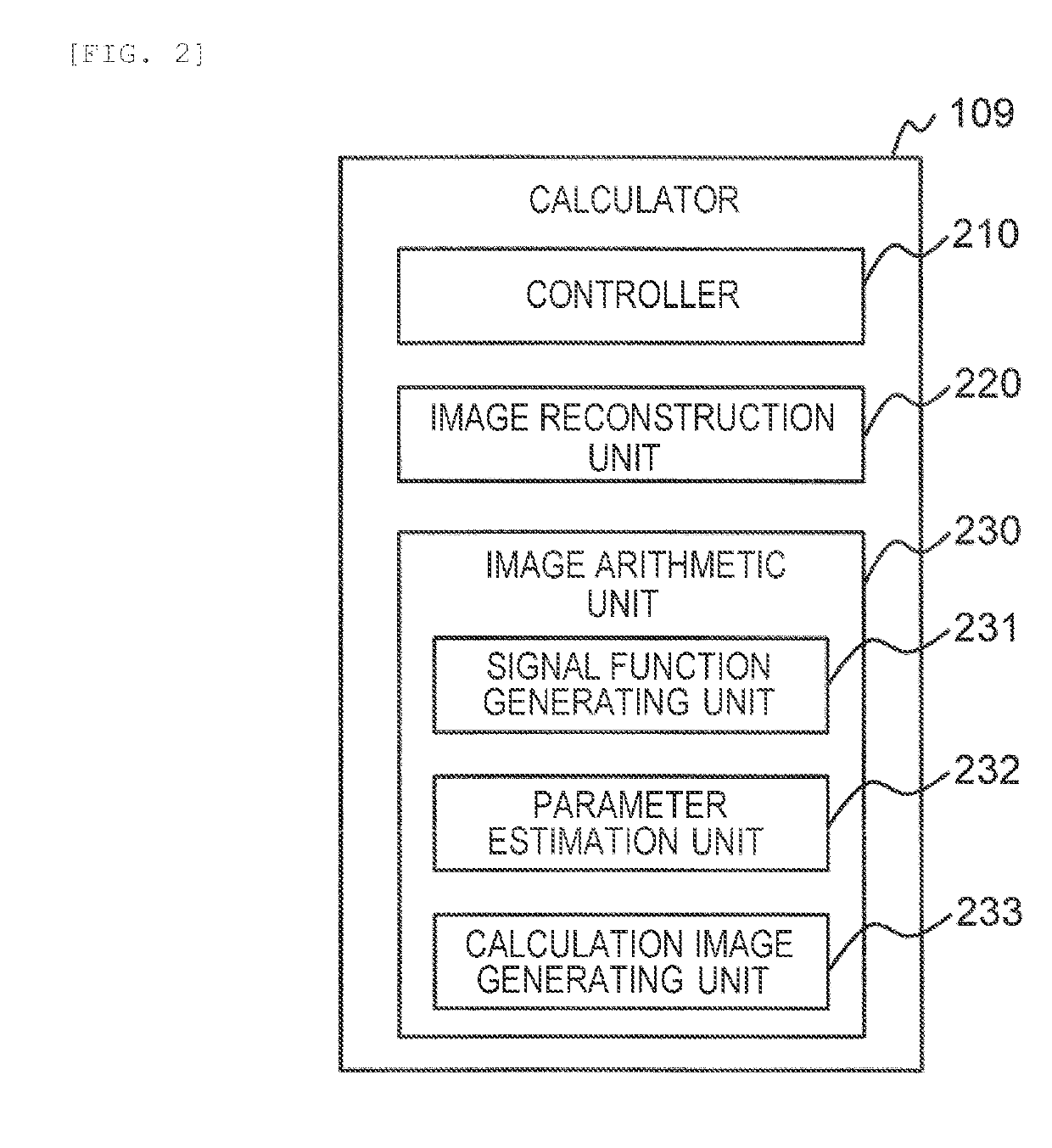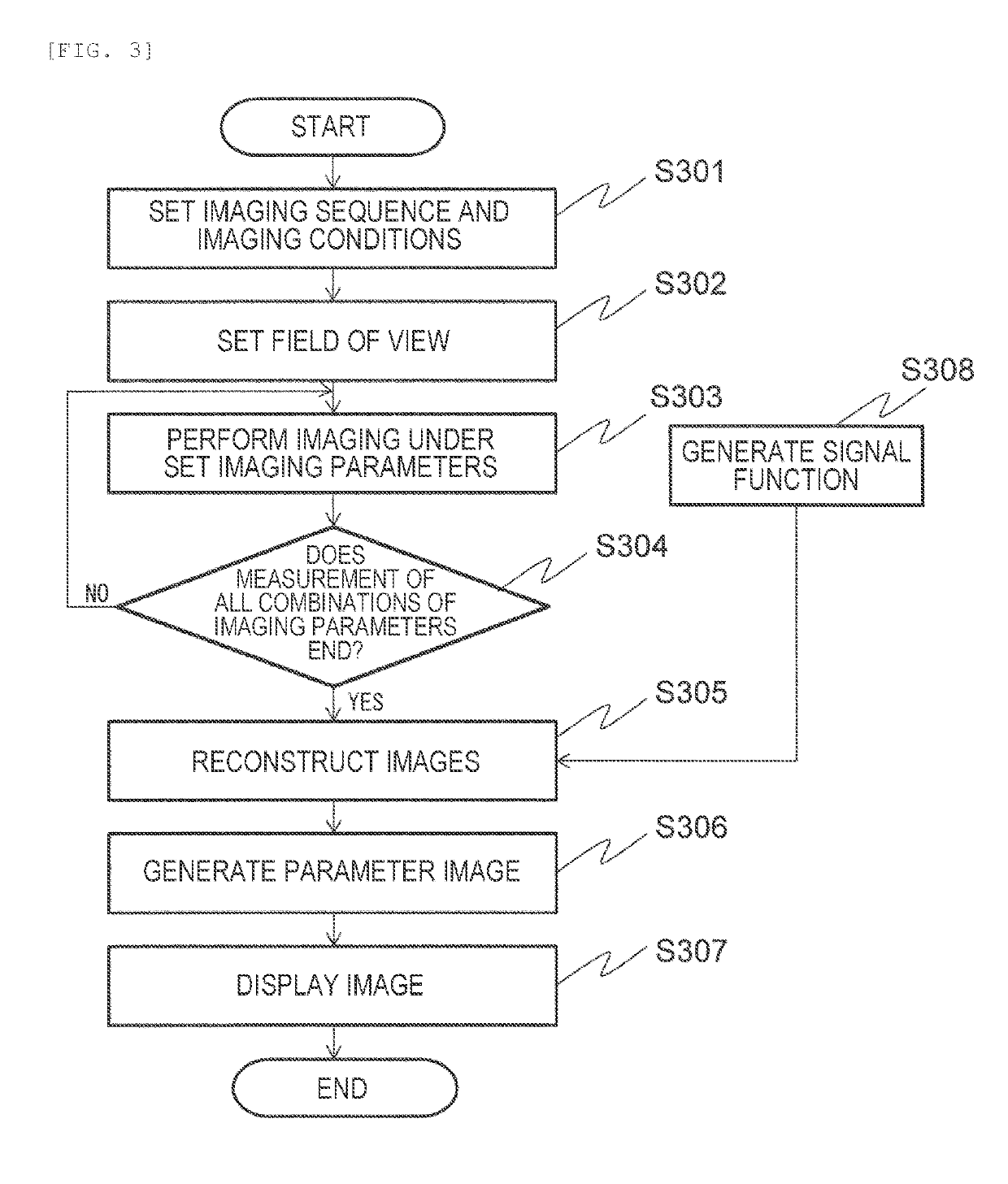Magnetic resonance imaging device, magnetic resonance imaging system, and parameter estimation method
a magnetic resonance imaging and parameter estimation technology, applied in the field of magnetic resonance imaging devices, can solve problems such as signal intensity changes, and achieve the effect of reducing the effect of magnetization transfer
- Summary
- Abstract
- Description
- Claims
- Application Information
AI Technical Summary
Benefits of technology
Problems solved by technology
Method used
Image
Examples
first embodiment
[0035]Hereinafter, a first embodiment to which the present invention is applied will be described. Hereinafter, in all the diagrams for describing the embodiment of the present invention, components having the same functions are represented by the same reference numerals, and the description thereof will not be repeated.
[0036]First, an overall configuration of an MRI device according to the embodiment will be described. FIG. 1 is a block diagram illustrating a schematic configuration of an MRI device 100 according to the embodiment. The MRI device 100 includes: a magnet 101 that generates a static magnetic field; a gradient magnetic field coil 102 that generates a gradient magnetic field; a sequencer 104; a gradient magnetic field power supply 105; a high frequency magnetic field generator 106; a transmitter / receiver coil 107 that irradiates a high frequency magnetic field and detects a nuclear magnetic resonance signal; a receiver 108; a calculator 109; a display 110; and a storage...
example 1
of RF Pulse
[0087]In this example, as the RF pulse (FIG. 5: 502) for excitation, only a main lobe (one peak) of a sinc function is used, and the application time is set as 2.4 ms. FIG. 9A illustrates the intensity and the phase. In addition, FIG. 9B illustrates an excitation profile 451 of the RF pulse.
[0088]Assuming that the application time is represented by t sec and the number of peaks is represented by n, a frequency band (full width at half maximum) of a sinc function is approximately represented by (n+1) / t Hz. Since the application time is 2.4 ms and the number of peaks is 1 in this excitation pulse, the frequency band (full width at half maximum) is 0.83 kHz. In a case where the frequency band is 1 kHz or lower, the magnetization transfer effect can be suppressed. Therefore, by using the excitation pulse of FIGS. 9A-9B, a subject parameter distribution can be obtained substantially without being affected by magnetization transfer.
[0089]In an excitation pulse of the related ar...
example 2
of RF Pulse
[0093]In this example, as the RF pulse (FIG. 5: 502) for excitation, a gaussian function is used. The application time is set as 4.8 ms. FIG. 11A illustrates the intensity and the phase. In addition, FIG. 11B illustrates a positional relationship between an excitation profile 452 of the RF pulse and a field of view 412.
[0094]Under the same application time, the frequency band of the excitation pulse having a gaussian function shape is about two times that of the sinc function having one peak. In FIG. 11B, the application time of the RF pulse is two times that of the sinc function of Example 1 (FIG. 9A). Therefore, the frequency band is about 0.8 kHz which is substantially the same as that of the RF pulse of FIG. 9A. Accordingly, even in a case where this excitation pulse is used, a subject parameter distribution can be obtained in a state where there is substantially no magnetization transfer effect.
[0095]In addition, as illustrated in FIG. 11B, a field of view in the z d...
PUM
 Login to View More
Login to View More Abstract
Description
Claims
Application Information
 Login to View More
Login to View More - R&D
- Intellectual Property
- Life Sciences
- Materials
- Tech Scout
- Unparalleled Data Quality
- Higher Quality Content
- 60% Fewer Hallucinations
Browse by: Latest US Patents, China's latest patents, Technical Efficacy Thesaurus, Application Domain, Technology Topic, Popular Technical Reports.
© 2025 PatSnap. All rights reserved.Legal|Privacy policy|Modern Slavery Act Transparency Statement|Sitemap|About US| Contact US: help@patsnap.com



